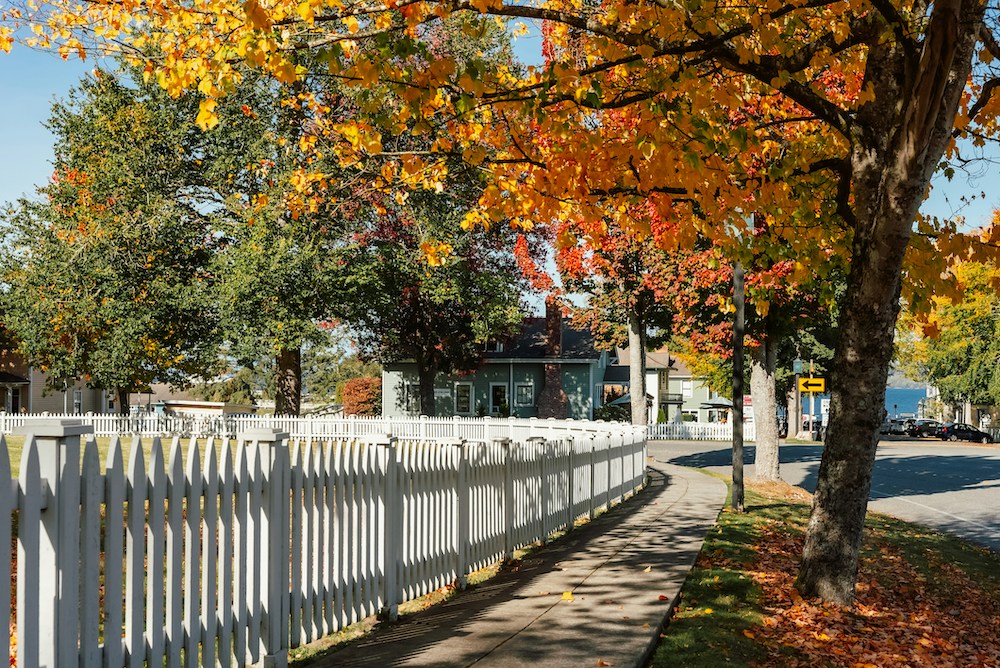Big cities are out, local flavor is in—small towns and cool neighborhoods are changing the meeting planning playbook
Forget the usual suspects. As attendee preferences shift and traditional city support wanes, discover how embracing charming small towns and vibrant local neighborhoods can transform your next corporate gathering into an unforgettable, budget-friendly, and highly engaging experience. Plus, see Priceline’s hottest ‘Awayborhoods’ for 2025.
In the dynamic world of meetings and events, understanding evolving attendee preferences is paramount. A significant shift is underway in consumer travel, with trends like Townsizing and Awayborhoods gaining considerable traction. “Townsizing,” a term coined by Priceline in its 2025 Trend Report, describes a growing preference for smaller, easy-going towns over bustling, often overpriced, big cities, with Gen Z travelers, for instance, 89% more likely to seek a “small town Nancy Meyers lifestyle vibe” for their vacations. Complementing this, “Awayborhoods” highlights a desire among young travelers to embrace local living and the authentic atmosphere of specific neighborhoods, even within larger cities, rather than focusing on crowded, tourist-oriented attractions. These trends signal a yearning for simplicity, authenticity, and meaningful connection, and recognizing that your attendees are these very consumers can give you a significant edge in planning impactful and well-received offsite meetings.
This shift in traveler psychology arrives at a critical juncture for the meetings industry. According to Destinations International’s (DI) 2025 DestinationNEXT Futures Study, a striking 42 percent of Convention and Visitors Bureaus (CVBs) report their funding is at risk of being reduced or eliminated in the next three years—an increase from 37 percent in 2023. This means that meeting and event planners might not be able to count on the same level of support they were accustomed to from the CVBs of first-tier cities, especially given the broader federal policy impacts like the “One Big Beautiful Bill Act” (OBBBA) , which has drastically cut funding for national tourism promotion and increased international visa fees. This evolving landscape makes second-tier cities and smaller, authentic destinations—which align perfectly with the townsizing and awayborhood trends—increasingly attractive, and crucially, easier to sell to potential meeting attendees.
FURTHER READING: THE BIG BEAUTIFUL BILL—NOT TOO PRETTY FOR MEETINGS
What is Townsizing, and Why Should Planners Care?
“Townsizing” embraces a slower pace, natural beauty, and the simple pleasures of everyday life, moving away from packed itineraries and urban hustle. For meeting and event planners, this trend isn’t just about leisure travel; it’s a strategic opportunity. The same benefits that attract consumers to townsizing can be powerfully applied to offsite meetings and corporate retreats:
Reduced Stress & Enhanced Focus: Escaping the urban grind to a quieter setting can significantly reduce attendee stress, fostering a more relaxed and focused environment for collaboration and learning.
Affordability: Smaller towns often offer more competitive rates for venues, accommodations, and local services, allowing your budget to stretch further. This is particularly relevant as CVBs, often funded by hotel occupancy taxes , face potential revenue declines due to broader federal policy impacts.
Authentic Connection: With fewer crowds, it’s easier for attendees to connect with each other, with local culture, and even with themselves. This fosters stronger team bonds and more memorable experiences than a generic city hotel ballroom.
Unique Experiences: Small towns offer distinct local charm, from quaint shops and mom-and-pop diners to outdoor activities and cultural heritage trails, providing unique opportunities for team-building and immersive experiences that big cities often lack.
Beyond the City Center: The ‘Awayborhood’ Appeal
Complementing the townsizing trend is the rise of “Awayborhoods.” This concept, also highlighted by Priceline, refers to young travelers’ preference for embracing local living and the authentic atmosphere of specific neighborhoods, even within larger cities, rather than focusing on crowded, tourist-oriented attractions. These travelers are seeking down-to-earth realism and a feeling of being a “local” wherever they go, with 37% believing the neighborhood they stay in significantly impacts their vacation experience.
To illustrate this trend, Priceline has identified the top 10 Hottest Awayborhoods travelers plan to visit in 2025:
French Quarter, New Orleans, LA
Capitol Riverfront, Washington, DC
Wynwood, Miami, FL
North End, Boston, MA
Mission District, San Francisco, CA
Ybor City, Tampa, FL
Silver Lake, Los Angeles, CA
South Congress, Austin, TX
Pearl District, Portland, OR
Rino Art District, Denver, CO
This trend is particularly relevant for meeting and event planners because it signals a desire among attendees for:
Authentic Local Immersion: Even if a large city is chosen, selecting a venue within a vibrant, distinct neighborhood allows attendees to experience a more genuine slice of local life, complete with unique eateries, independent shops, and a less commercialized feel.
Reduced Overwhelm: By focusing on a specific “awayborhood,” planners can curate a more manageable and intimate experience, avoiding the sensory overload of sprawling urban centers. This aligns with the desire for reduced stress and enhanced focus that townsizing offers.
Cost-Conscious Quality: As consumers become more cost-conscious but refuse to compromise on quality, “awayborhoods” can offer unique, high-quality experiences that might be more affordable than prime downtown locations, maximizing your event budget while still delivering a memorable experience.
The convergence of townsizing and awayborhoods underscores a fundamental shift in traveler psychology: a yearning for simplicity, authenticity, and meaningful connection. Your attendees, as these very travelers, are likely to be highly receptive to offsite meeting destinations that embody these values.
Leveraging Townsizing and Awayborhoods for Your Next Offsite
In light of the shifts in the travel industry and the growing appeal of smaller destinations and authentic neighborhoods, here are strategic considerations for meeting and event planners:
Domestic, Accessible Markets and Distinct Neighborhoods: Embrace the “townsizing” ethos by focusing on smaller, easily accessible domestic locations. These could be charming coastal towns, mountain retreats, or historic villages that offer a distinct sense of place without the logistical complexities and higher costs often associated with major metropolitan hubs. Consider locations like Ocean Shores, Washington; Cannon Beach, Oregon; Stowe, Vermont; or Marathon, Florida, which offer natural beauty and a relaxed atmosphere. Alternatively, within larger cities, identify “awayborhoods” that offer a unique, local vibe, allowing attendees to feel like residents rather than just tourists.
Deepen Local Partnerships with CVBs and Community Stakeholders: Your local Convention and Visitors Bureau (CVB) in a smaller town or a specific city neighborhood can be an even more vital resource. While CVBs nationwide face funding risks, those in smaller, domestically-focused destinations or specific urban neighborhoods might offer more personalized support and deeper connections to local vendors and unique venues. Strengthen these relationships to tap into authentic local experiences, from farm-to-table dining to unique team-building activities that showcase the town’s or neighborhood’s character.
Advocate for Broader Industry Support: Continue to engage with industry associations like the U.S. Travel Association. While townsizing and awayborhoods focus on domestic opportunities, the overall health of the travel ecosystem impacts all segments. Advocating for policies that support tourism at all levels, including the restoration of Brand USA funding and the reduction of burdensome visitor fees, benefits the entire industry in the long run.
Communicate the “Why” and Manage Expectations: Clearly articulate the benefits of a “townsized” or “awayborhood” offsite to your attendees. Emphasize the opportunity for genuine connection, a relaxed pace, and unique local experiences. For any international attendees, provide clear guidance on travel requirements, but frame the event’s location as a deliberate choice for a more intimate and focused experience, rather than a compromise due to external factors.
Innovate and Diversify Event Formats: Embrace the flexibility that smaller towns and distinct neighborhoods offer. Move beyond traditional conference room setups and integrate the destination’s unique attributes into your agenda. Think outdoor workshops, local culinary experiences, community service projects, or team-building activities that leverage the natural surroundings. This approach aligns with the DestinationNEXT study’s finding that destination organizations are increasingly focusing on community benefits and sustainability, allowing your offsite to contribute positively to the local economy and culture.
By strategically embracing the townsizing and awayborhood trends, meeting and event planners can create more impactful, cost-effective, and memorable offsite experiences, fostering deeper connections and greater productivity for their teams in a rapidly evolving travel landscape.
Any thoughts, opinions, or news? Please share them with me at vince@meetingsevents.com.





